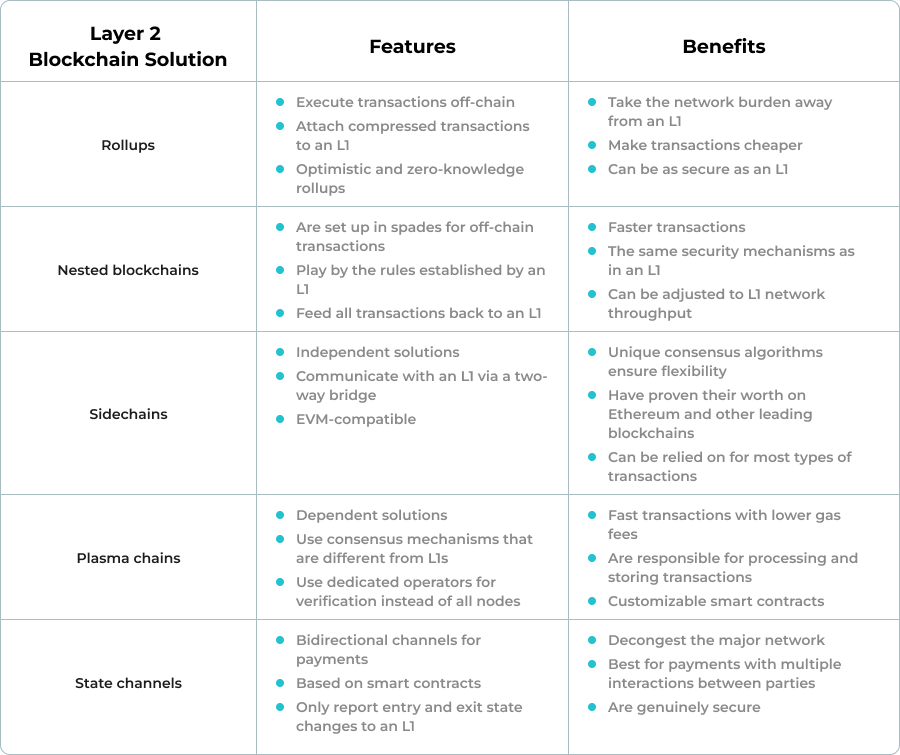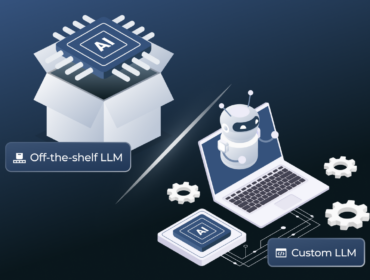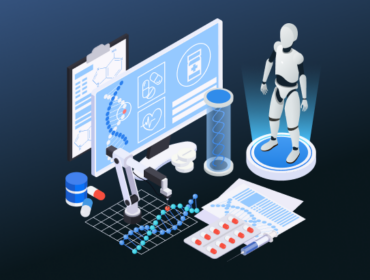Do you remember computers that weighed a ton, took up more space than a car in your garage, and could only be used for calculations? It’s hard to believe that they were revolutionary at one point. But they hit a snag amid increased adoption: the bulky machines needed to be redesigned, or else they would fall out of favor and be forgotten.
This is a great example of how a then-disruptive technology matured. And that’s exactly what’s happening to blockchain today.
What was ‘technologically comprehensive’ in 2008 is no longer as efficient as it was supposed to be. The most popular blockchains — these are Layer 1 blockchains comprising a network without add-ons — are becoming the oversized computers of 2022 as they get slower and more unwieldy by the day.
However, big changes are coming to Layer 1 blockchains. Layer 1 is quite limited because they don’t have the self-transformational powers to reconfigure the processes and rules governing the network to make it more scalable. But Layer 2 blockchain technology can do it for them.
Layer 2 blockchain solutions are networks, channels, and other solutions working alongside Layer 1 platforms. They are an extra layer of existing blockchains — hence the name — that does the heavy lifting and makes them more scalable. They do so by completing validation, transaction processing, and other tasks to help Layer 1 blockchains tear through efficiency barriers.
In this primer, we’ll look at Layer 2 solutions (also known as L2s) in more detail. Feel free to keep it tabbed to stay up to date with L2 types, benefits, and examples.
Why should you care about scalability?
Scalability is priority number one for any blockchain. If your blockchain-based product is scalable, you can:
- Bring it to a wider audience without security, availability, and performance setbacks
- Enable users to carry out transactions faster
- Reduce the computational resources needed to keep your application functional
- Take away the impact of rising transaction fees on users’ wallets
Scalability is a catalyst for the decentralization and genuine efficiency of L1 blockchains. The bad news is that it’s unachievable without challenging the status quo.
Why? Let’s take a look-see at how the number of daily blockchain transactions has been growing since 2010.

From 2018 onwards, seeing fewer than 200K daily transactions was as rare as Elon Musk resisting the temptation to tweet about cryptocurrency. The paradox of widespread blockchain adoption is that the increasing number of transactions entails more validation tasks arranged in a queue, which eventually leads to higher gas fees and longer waiting times. Nobody is excited about paying more for something that takes ages.
If you have a DeFi product, the scalability issue contradicts the big idea behind DeFi. Ballooning fees and the inconvenience of a slowly functioning network put the chains on the freedom minted by DeFi, replacing intermediaries with other things your target audience will get furious about.
Layer 2 blockchain technology can reverse the dissatisfaction with your DeFi or other blockchain-based product. By taking it upon themselves to process and record transactions, L2s speed up a primary network and boost its throughput without sending gas fees into an uncontrolled rally. So, when more users hop on, you can add more nodes and scale up your product efficiently.
How Layer 2 solutions pair with Layer 1 platforms
L2 networks don’t operate in a vacuum. There must be a permanent connection between them and the architecture of L1 platforms. When this connection is established, L2s transfer essential records to L1s after finalizing transactions off premises so that the ledger is consistently updated.
In other words, L2s and L1s share the same ledger database — and often, the same security protocols — although the blockchain operations happen in different environments. In this way, an L1 network doesn’t have to carry the weight of all the transactions while still being cohesive and immutable. It also retains its tamper-proof properties, which is super-important for any blockchain application.
Establishing a connection between Layer 1 networks and Layer 2 blockchain solutions doesn’t require taking the primary infrastructure apart. L2s are kind of sandwiched on L1s via the integration of protocols. This is great for business owners and users alike because:
- No additional security vulnerabilities spring up across the main network.
- An L1 blockchain doesn’t need to be down while an L2 channel is being integrated and optimized.
- You can set up a unified ecosystem to get the best of both worlds: the security of the main network and the scalability of L2 solutions.
For a user, little will change after switching to an L2 in terms of user experience. What you can do in the Layer 1 environment can also be done with a Layer 2 solution wired for show-stopping throughput. But the user satisfaction score can hit a new all-time high as transactions start costing less and take milliseconds to finalize.
Field-tested types of Layer 2 blockchain scaling solutions
With transactions outnumbering the capacity of the largest blockchains, desperate urgency comes to the fore for adopting complementary networks. The adoption process is well underway for Bitcoin, Ethereum, and other heavyweight ecosystems with L2 scaling solutions like:
- Rollups
- Nested blockchains
- Sidechains
- Plasma chains
- State channels
Each of these L2s is relatively new yet field-tested on larger blockchains. Here’s how they work.
Rollups
A rollup is a file archiving tool for blockchain. Think of a RAR file that contains hundreds of compressed files without causing your PC to run low on storage. Rollups do a similar thing to transactions happening on parallel networks. They bundle a lot of transactions into a single transaction, which is the only one attached to a smart contract on a primary network. That’s huge in terms of efficiency.
When learning more about rollups, you’ll likely come across optimistic and zero-knowledge varieties. The former wraps up transactions and transfers a modified state to the main network without verifications unless red-flagged as an invalid transaction. However, zero-knowledge rollups run verifications for each bundle of transactions, but they are harder to attach to smart contracts due to limited compatibility.
Nested blockchains
Nested blockchains are heavily dependent on the L1 networks they are added to. The major blockchain defines a consensus mechanism, transaction processing rules, and interaction requirements for its nested blockchains. They never operate in solo mode, meaning multiple smaller nested blockchains are usually connected to the main ecosystem to reduce network traffic congestion.
Sidechains
What sets sidechains apart from nested blockchains is how subordinate they are. Sidechains do not depend that heavily on the main blockchain as they establish their own rules for reaching consensus and adding new blocks. These rules aim to expedite operations and lower gas fees, although nothing will ever have practical value if trust is unachievable between a Layer 1 platform and its sidechains.
Considering how sidechains work, calling them Layer 2 blockchain solutions is a misnomer. Sidechains are self-contained networks that require a dedicated two-way bridge to enable interoperability with an L1 system. This bridge is based on smart contracts and supervises how data, tokens, and funds move from the central platform to its sidechains — and vice versa. A two-way bridge allows for baking in trust for chain operations and preserving the efficiency of distributed transactions.
Plasma chains
Plasma chains are similar to nested blockchains in that they depend on primary networks. But they have their own consensus algorithms to ‘assign’ a dedicated operator to verify transactions of interest — rather than getting scores of nodes to validate all transactions happening across the system. The operator reaches back to a Layer 1 platform to record state changes, which is why a plasma chain is something between a nested blockchain and a sidechain.
State channels
Ideal for payments, state channels are off-chain channels in which two users can carry out transactions. With their funds locked on the central platform and regulated by a smart contract, users enjoy a high level of security without having to inundate the network with all transactions. So, state channels let smart contract parties make payments at a higher velocity by only recording a state change after setting up and closing a channel.
Key things to remember (or to save to your Google Drive)

5 Real-life examples of Layer 2 blockchain solutions
Most L2s are still on their way to being fully designed for scalability that doesn’t sweep security loopholes and compatibility issues under the rug. But if you can’t wait until the L2 revolution reaches its apex, you can get started with the most respected L2 solutions as soon as today.
StarkEx
Powered by StarkWare, StarkEx is a zero-knowledge rollup system. What makes StarkEx unique is that this Layer 2 blockchain solution distributes workloads between an off-chain prover and an on-chain verifier. The former is responsible for the drudgery of processing transactions beyond an L1 platform and passing on validity proofs to the latter for in-depth inspection.
StarkEx allows you to achieve scalability and affordability for users while empowering them to have control over their funds. The solution has been around for two years and can be easily accessed through Ethereum.
Best for:
- DeFi liquidity pools
- Trading and payments
- NFT minting
Immutable X
Are you building an NFT marketplace on Ethereum? Integrating it with Immutable X may be a great idea.
Another zero-knowledge rollup solution, Immutable X makes scaling easier as it eliminates network traffic clogs and can run fast enough to process 9,000 transactions per second. It’s compatible with all NFT wallets and doesn’t impose trading fees. Immutable X is also known for its own token IMX, which you can use to hoard rewards through staking or to cover protocol fees.
Best for:
- NFT marketplaces
- Exchanges
- Blockchain games
Polygon
In geometry, polygons have many sides. But there are even more sides in Polygon, a comprehensive ecosystem of sidechains and L2 solutions — all for Ethereum.
Polygon sidechains can process 65,000 transactions per second each, resulting in ultra-low gas fees. If you aren’t ready to put Ethereum’s security protocols at stake, you can use Polygon’s zero-knowledge rollups, optimistic rollups, STARK proof system, and other solutions for scaling. Polygon has something L2-perfect for all use cases that go hand in hand with Ethereum.
Best for:
- DeFi services
- NFTs
- Utilities
Lightning Network
If you’ve ever wondered how fast lightning is, the answer is… pretty much as fast as payments in the Lightning Network.
Lightning Network is a separate L2 network that works like state channels without feeding all transaction hops into an L1 platform. It’s designed for Bitcoin and enables payments between two smart contract parties to be made within milliseconds. This solves Bitcoin’s notorious capacity problem while maintaining the integrity and security of off-chain transactions.
Best for:
- All things payment, including micropayments
- Messaging apps
- Play-to-earn games
Arbitrum
With optimistic rollups at its fundamental level, Arbitrum is a full-fledged scaling solution for transactions across Ethereum. It’s designed to boost the network’s throughput for EVM contracts and simple transfers. Arbitrum accomplishes its mission by taking resource-intensive operations off premises and reducing storage thanks to rolling up transactions optimistically. This sets up the solution to deliver a speed of 4,500 transactions per second and absolute EVM compatibility.
Best for:
- Exchange platforms
- DAOs
- NFTs
Important takeaways
A Layer 2 blockchain solution is an expansion of a larger blockchain. Some L2s can process all transactions off premises, and others can only handle bidirectional payments. But all types of L2s boost the scalability of a major blockchain by freeing up its capacity, making it more adjustable for a growing number of users and transactions.
Want an expert opinion on whether your product or service can benefit from rollups, state channels, or other Layer 2 blockchain solutions? Get one from Unicsoft today.





![Your Primer on Layer 2 Blockchain Solutions What’s the EU Artificial Intelligence Act and How to Comply? [Webinar]](https://unicsoft.com/wp-content/uploads/2024/03/Cover_1140_v1.1-370x280.png)

